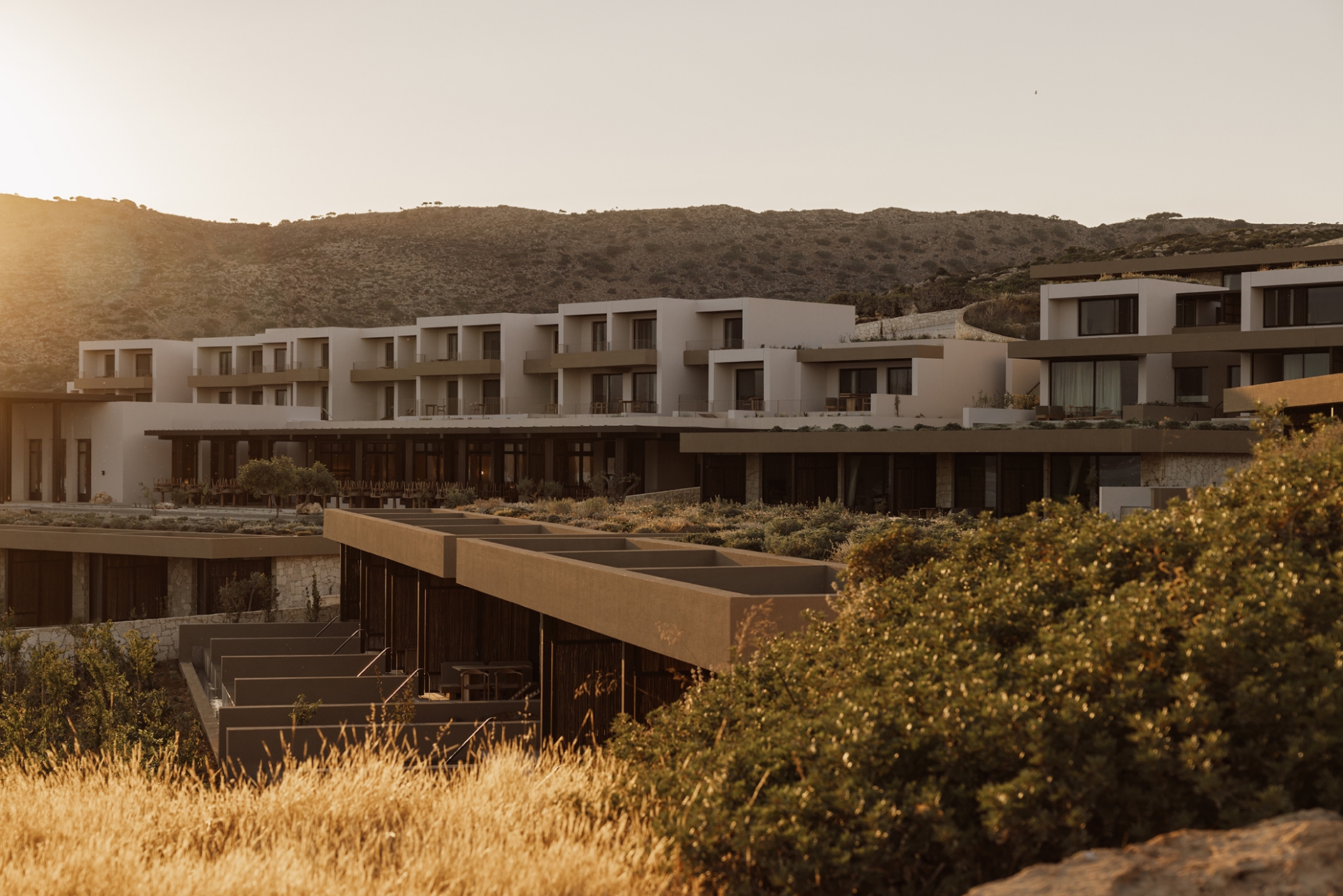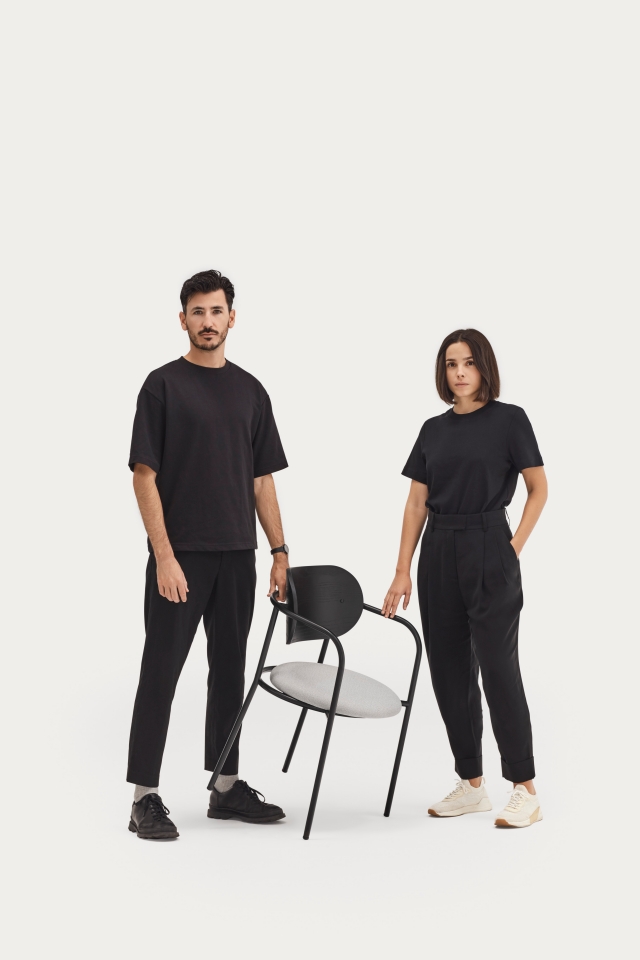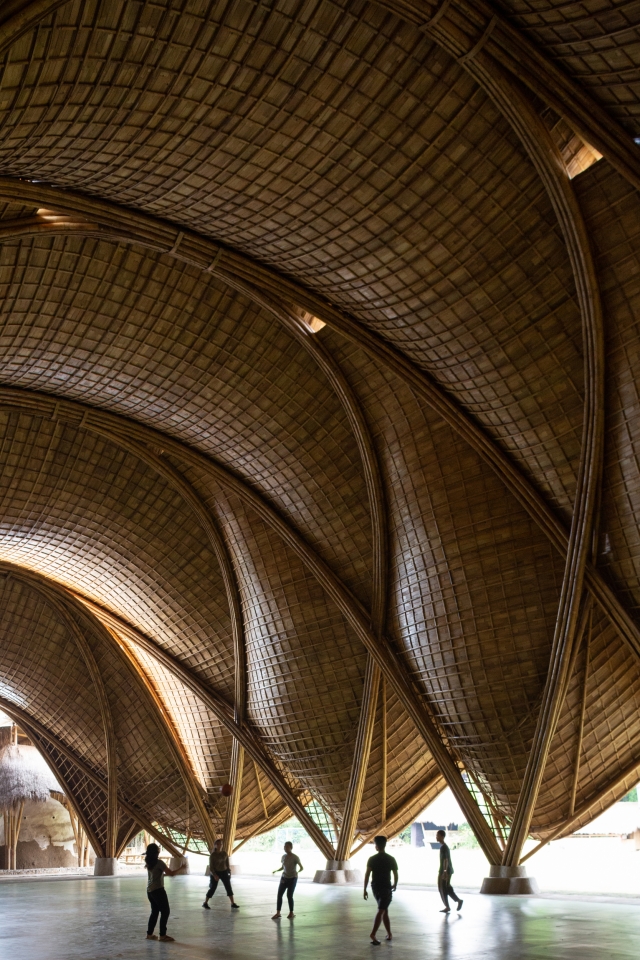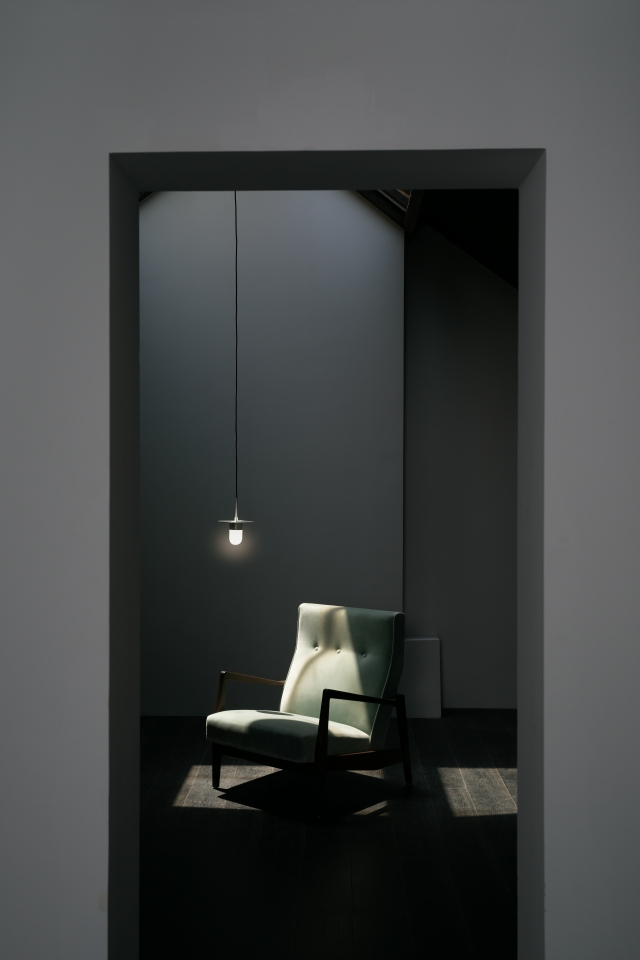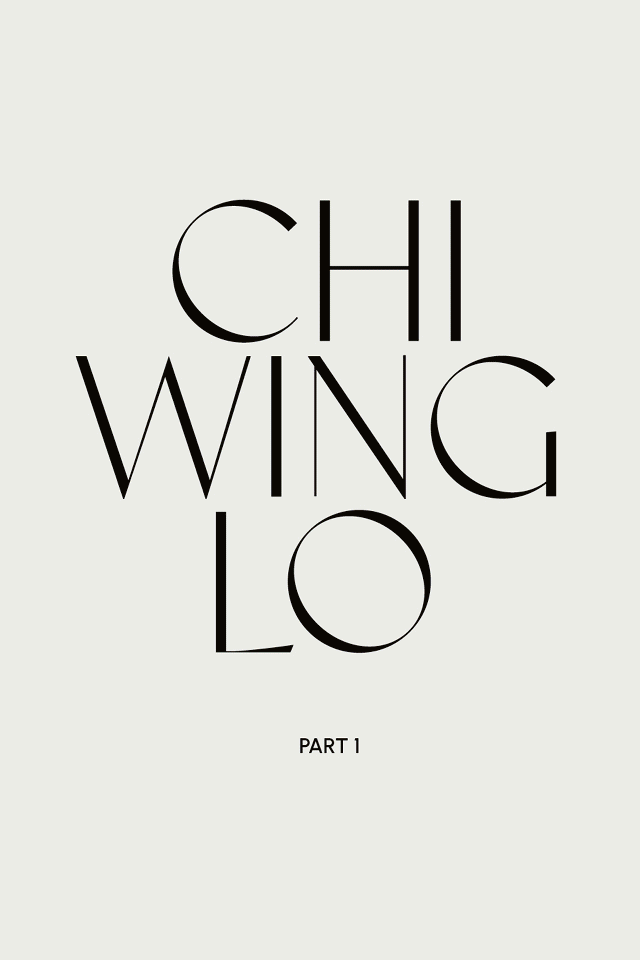Block722’s groundbreaking architecture ushers in a harmonious blend of Mediterranean simplicity and nature-infused luxury at the JW Marriott Crete Resort & Spa, redefining immersive hospitality on the island’s rugged shores. Nestled into the rocky hillside of Akra Pelegri, with sweeping views across Souda Bay, the new 5-star Marriott hotel in Marathi, Crete, stands as a testament to environmentally driven design. Crafted by the visionary team at Block722, this resort isn't merely a place to stay; it's an experience deeply intertwined with the wild coastal landscape, drawing profound inspiration from local architectural traditions and Crete’s cherished slow-living ethos. It embodies a philosophy of quiet, sustainable luxury that meticulously respects both its location and heritage.
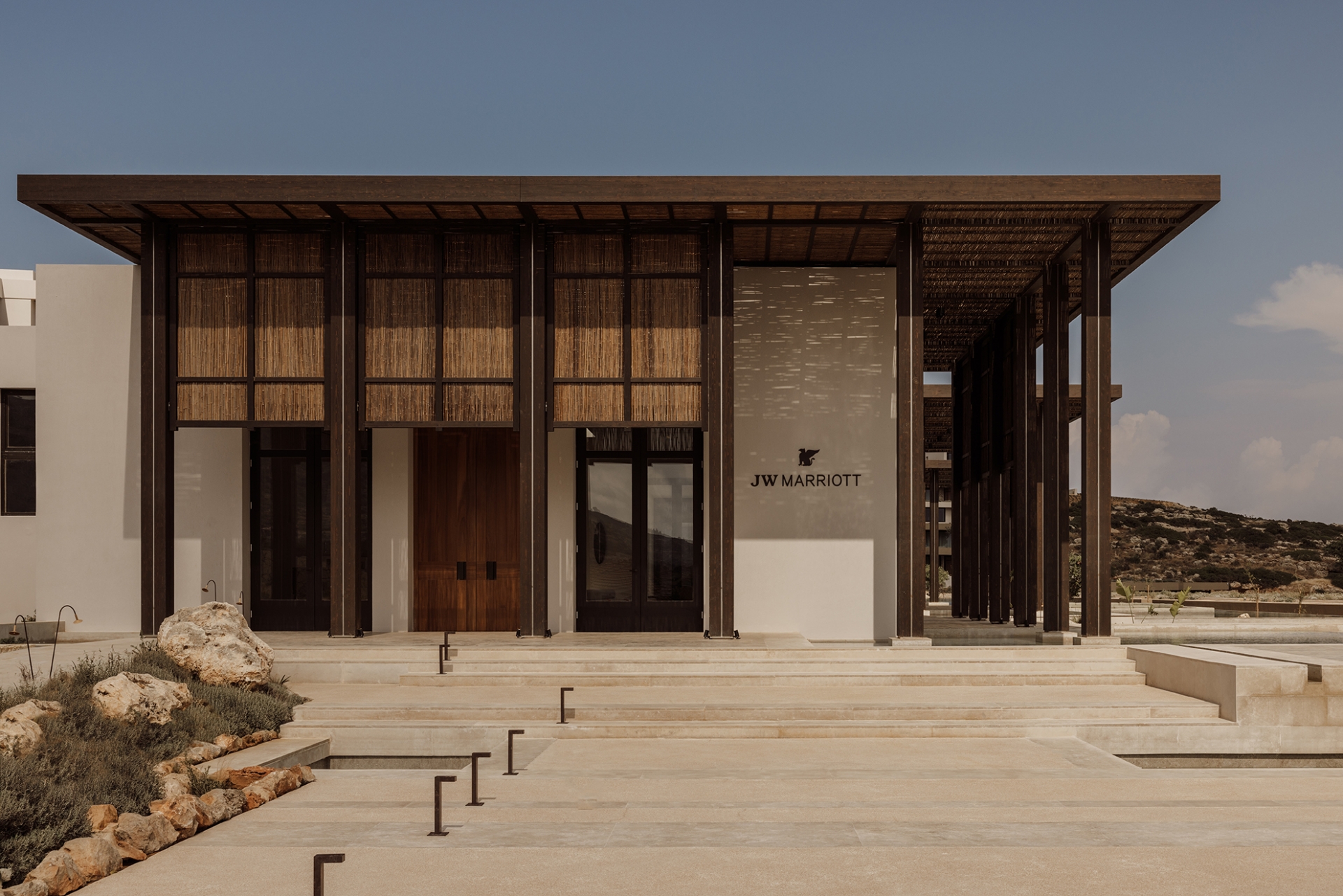
Hospitality in Harmony with Nature
Spanning a terraced 59,700 m2 site, the resort features 160 exquisitely designed rooms and suites, accommodating up to 450 guests, complemented by an array of generous shared amenities. The journey of immersion begins the moment you arrive, stepping into a spacious square adorned with native shrubs that extend a warm, authentic welcome. With each deliberate step, the sea gradually unveils itself – a meticulously orchestrated moment designed to allow a progressive reveal of both the architectural brilliance and the breathtaking natural surroundings.
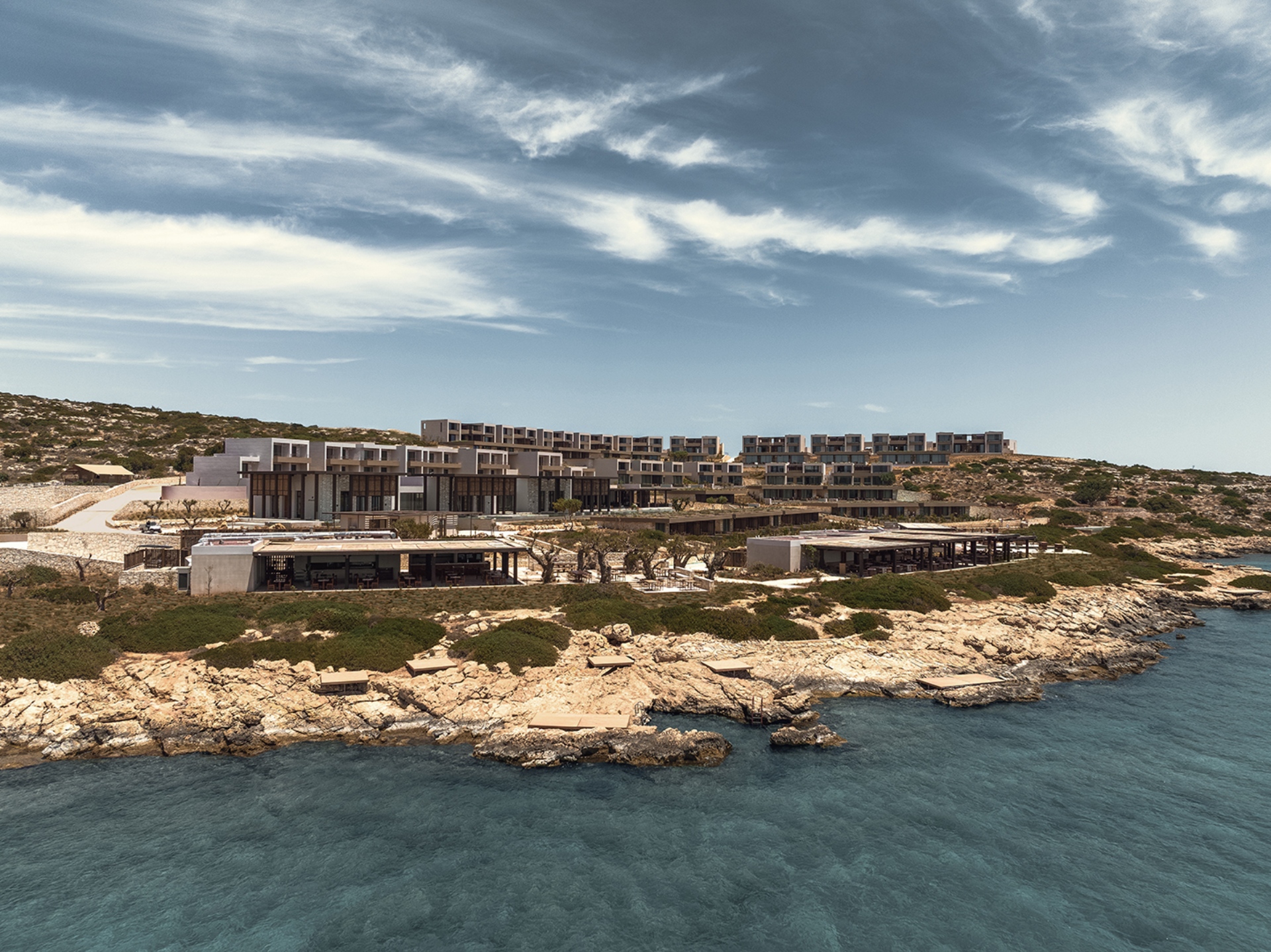
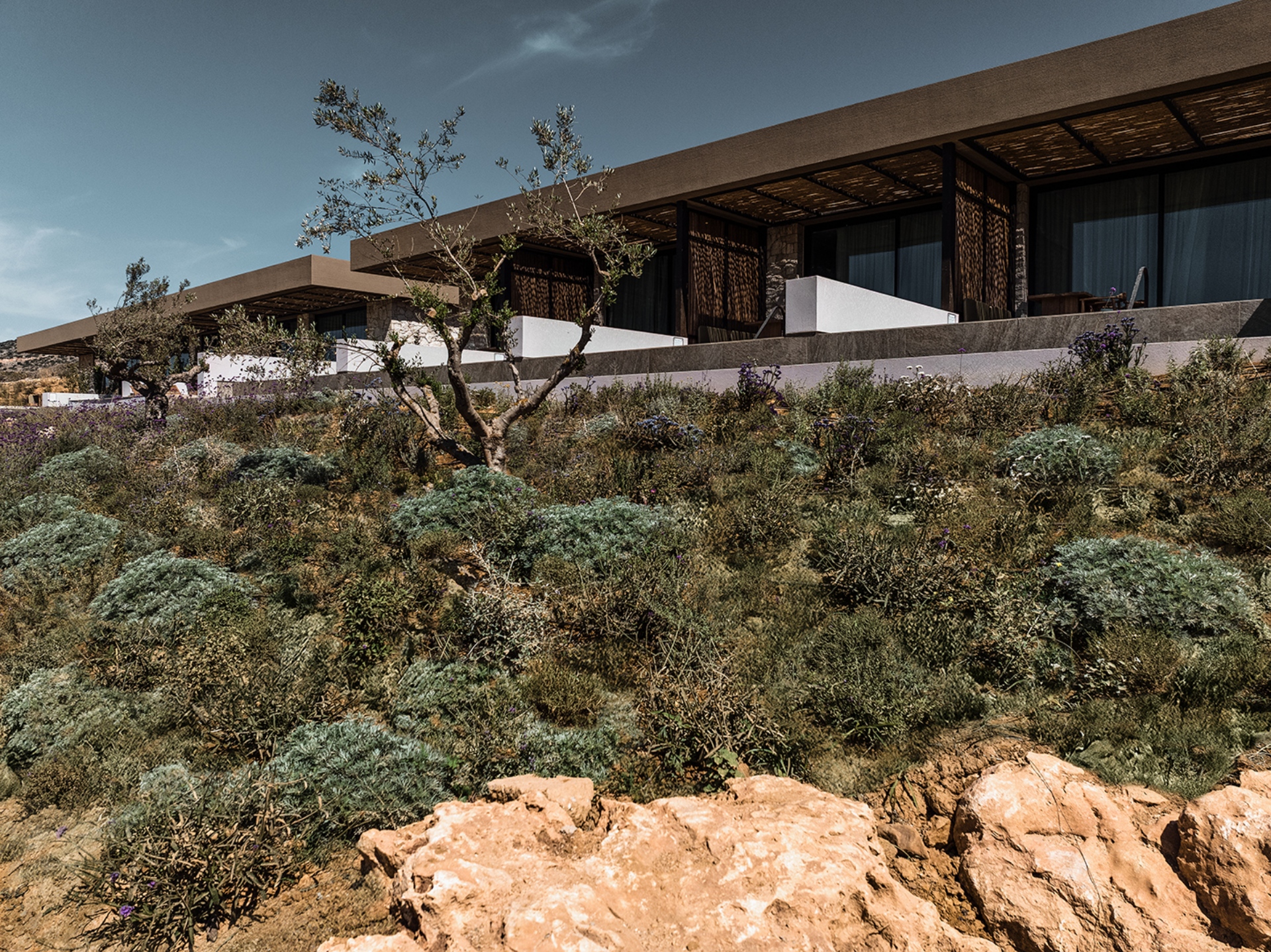
Inside the lobby, the verdant planting seamlessly extends, becoming an organic part of the interior and gracefully framing the reception seating. Natural light streams from above through a skylight, illuminating the internal garden and deepening the connection to the surrounding landscape. The reception area serves as the gateway to a series of interconnected indoor spaces, all thoughtfully furnished in calming, earthy tones. This communal heart of the resort flows into the bar, the main restaurant, and the JW Market, arranged as a sequence of clean, geometric volumes that open dramatically towards the sea through a series of grand pergolas – elegant filters between indoor and outdoor living.

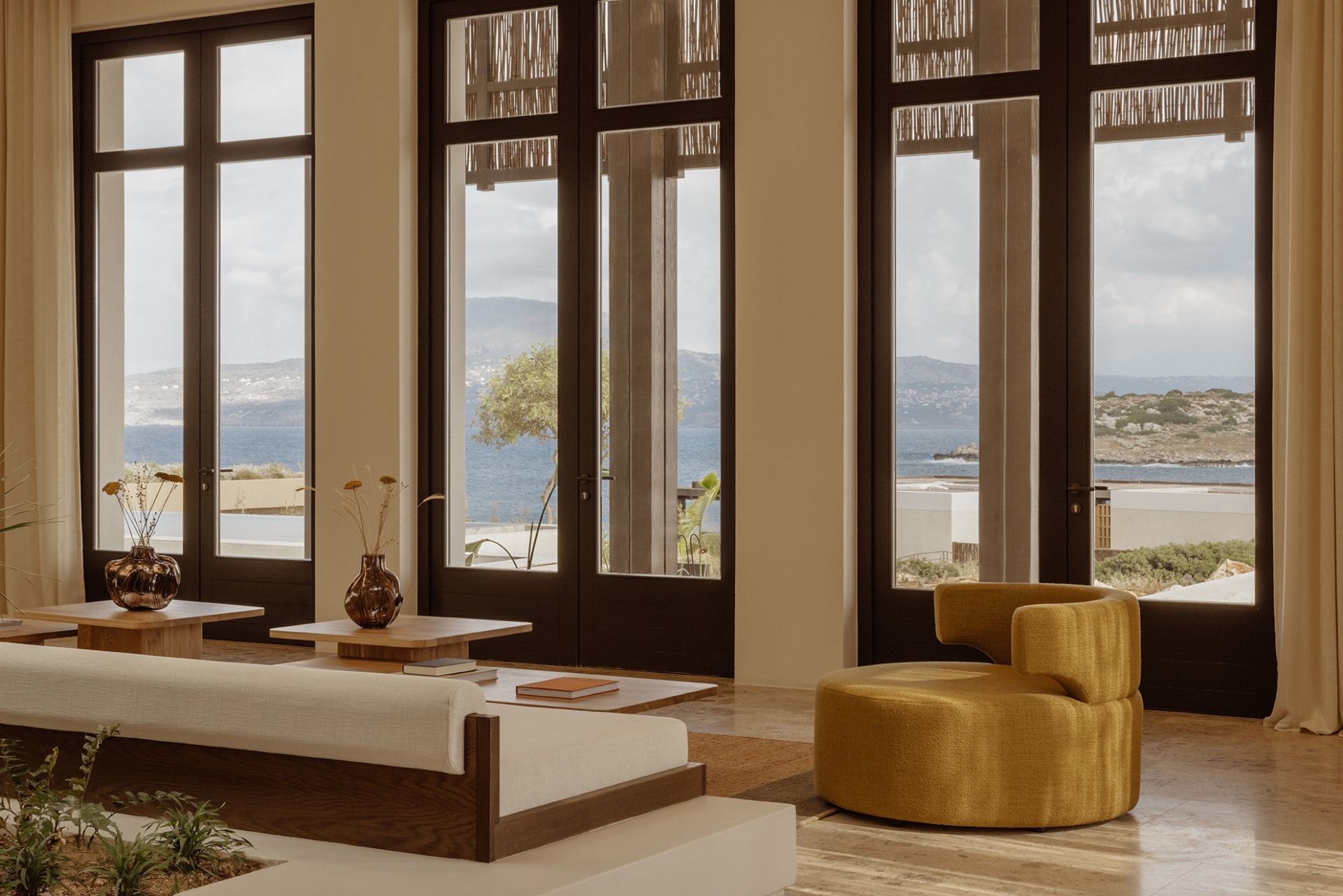
Shared Spaces Invoking Meditative Calm
These pergolas, forming the graceful transition from indoors to out, boast simple supports reminiscent of ancient Doric columns. Dense shading elements, crafted from natural materials, artfully filter the Mediterranean sunlight, creating an ever-shifting ballet of light and shadow across the verandas and the tranquil reflective pool that embraces them. Here, raw, uncut boulders of rock harmonise with the architecture’s clean, geometric lines, enhancing tactility and forging a profound connection to the elemental nature of the surroundings. The full meditative quality of this environment can be savoured in the serene islands of sunken seating, accessed by pathways gracefully traversing the water.
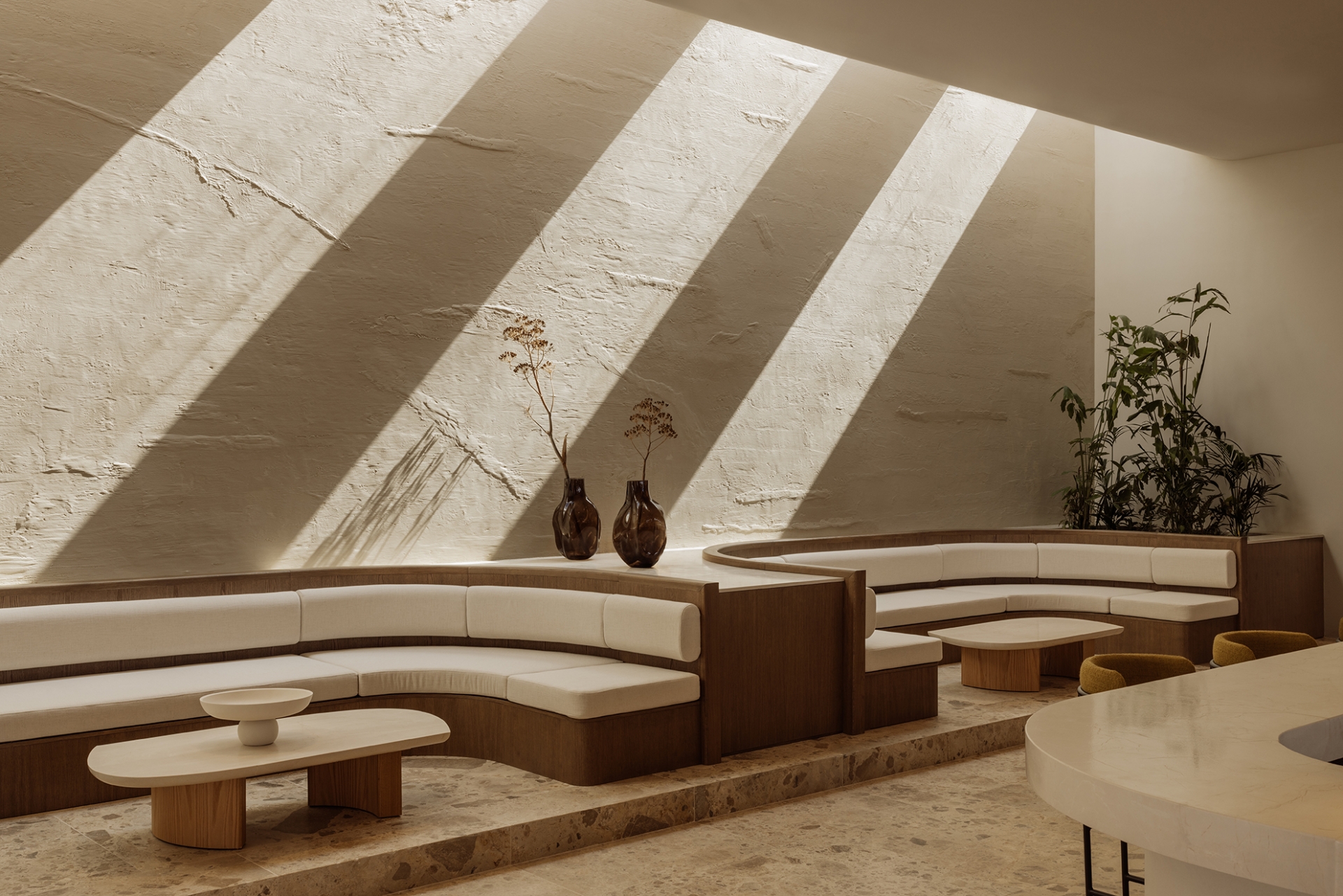
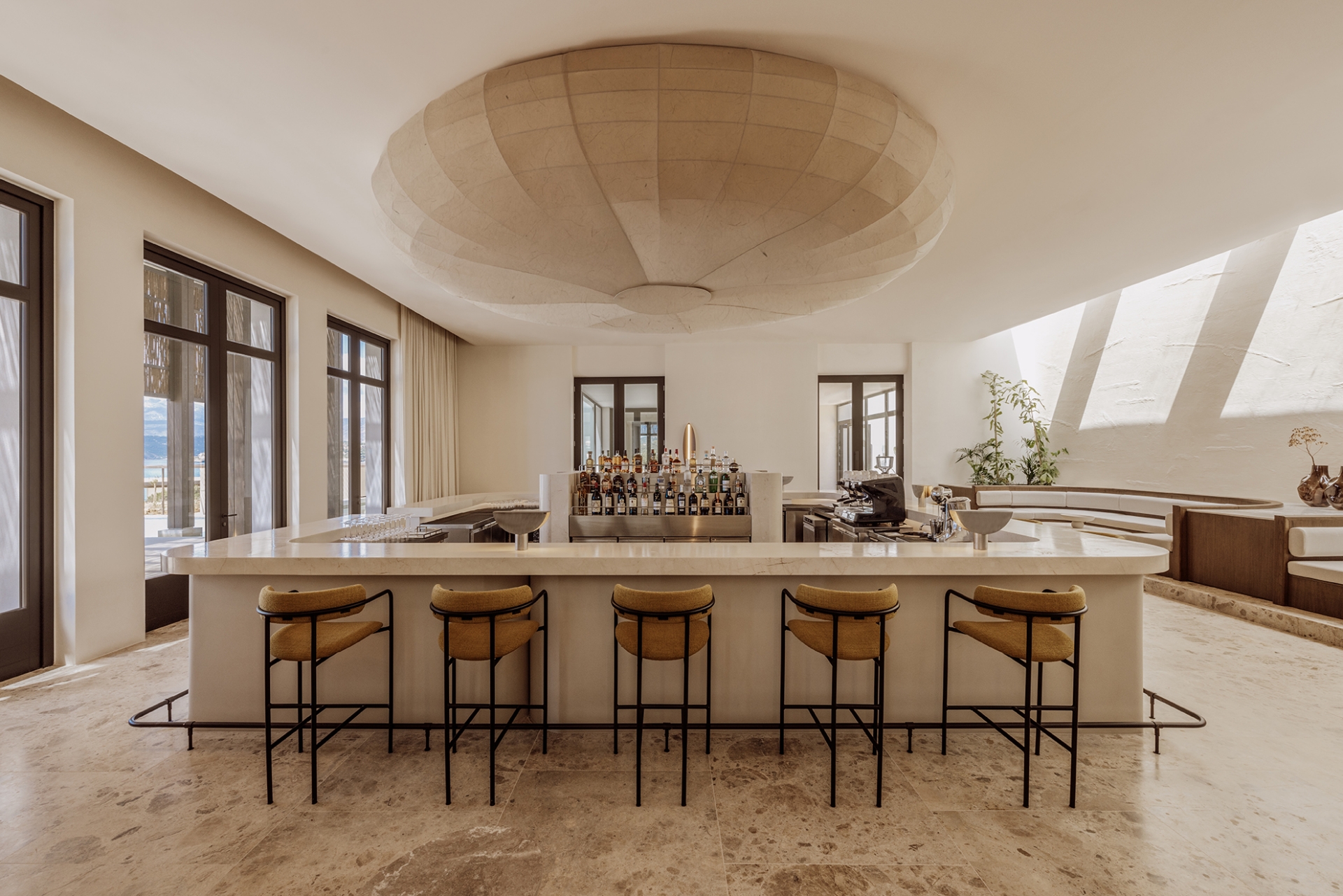
Further amenities, including additional restaurants, shaded seating areas, swimming pools, and a wellness centre, are thoughtfully distributed across the lower part of the site, nestled between the rugged rocky terrain and the captivating coastline. This spatial composition ensures gentle, natural transitions between communal and private areas as guests ascend towards the accommodation units, which are elegantly situated on the higher elevations of the landscape.
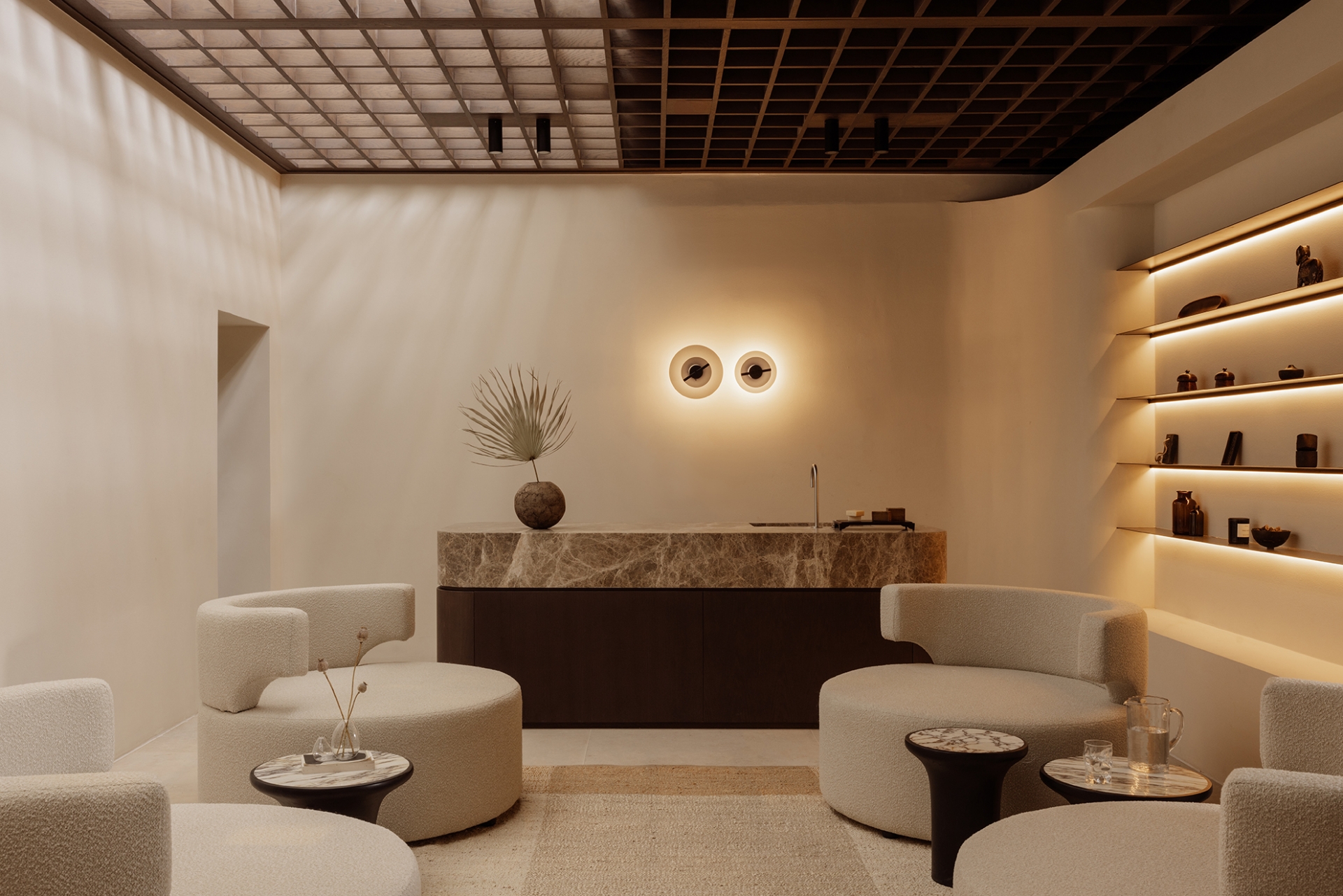
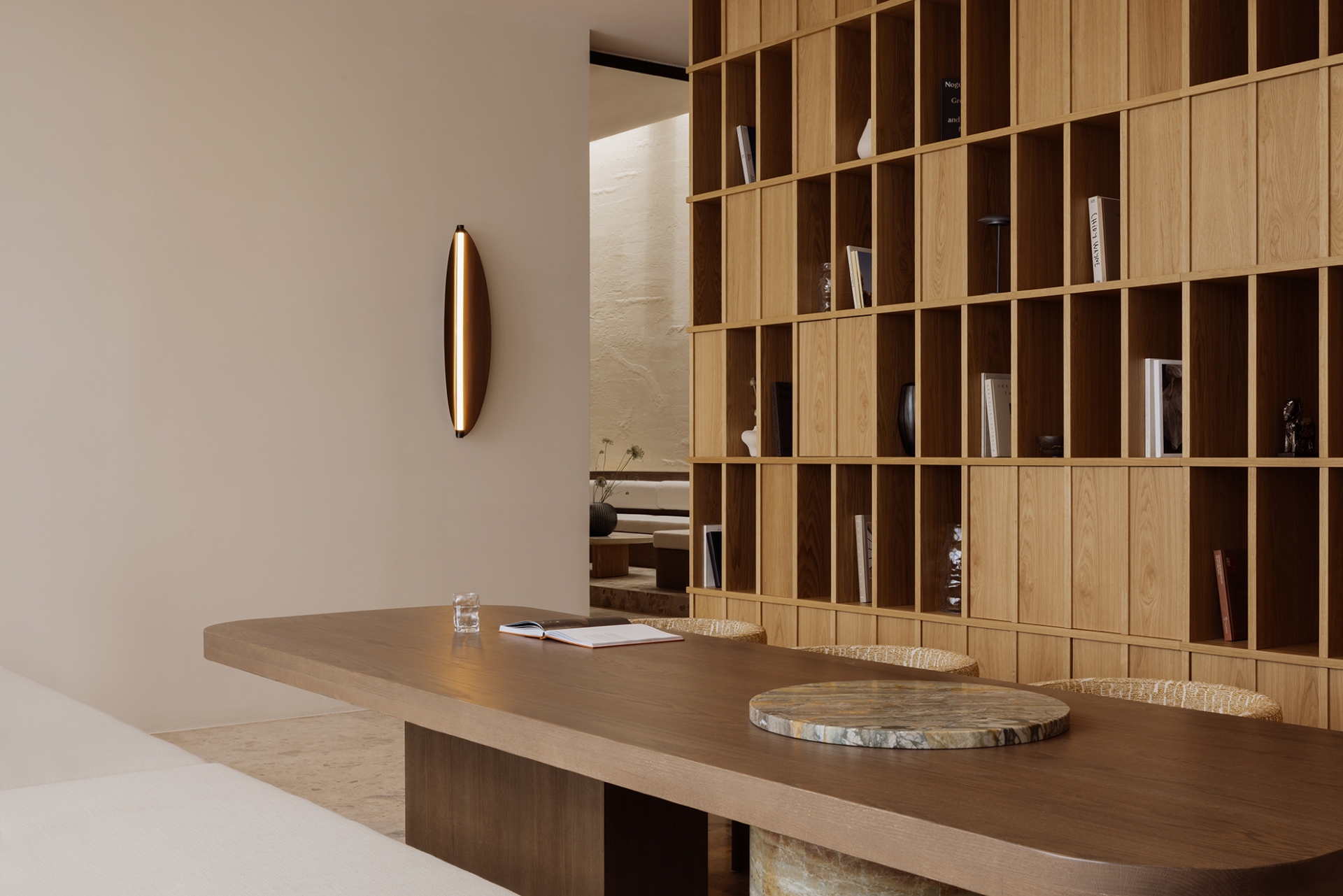
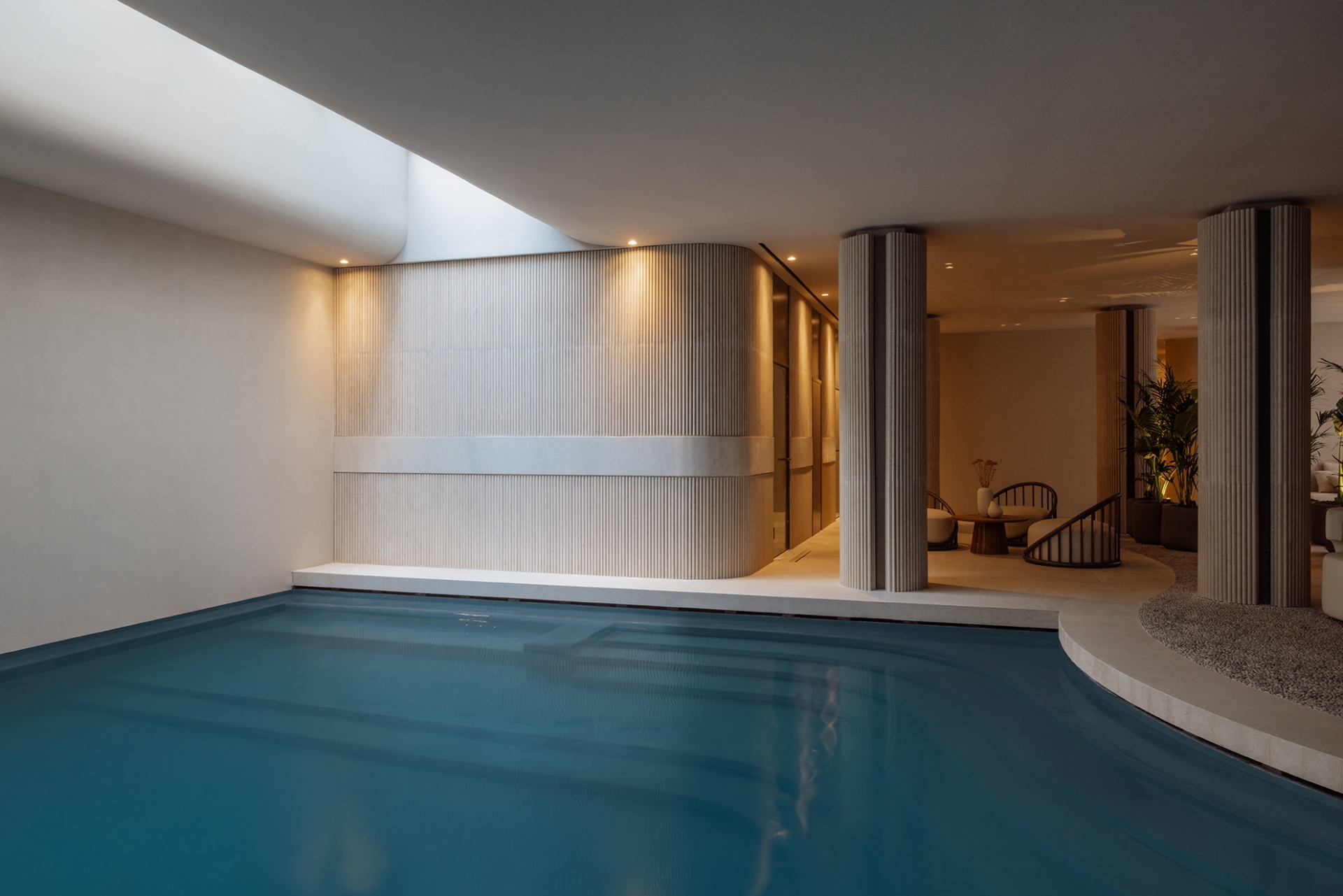
Rooms at One with Nature
Designed as a series of one and two-level geometric structures, meticulously positioned on the natural slope, the rooms and suites exist in perfect harmony with the landscape. Their amphitheatrical placement and human-scale architecture guarantee uninterrupted views, absolute privacy, and a seamless integration into the environment.
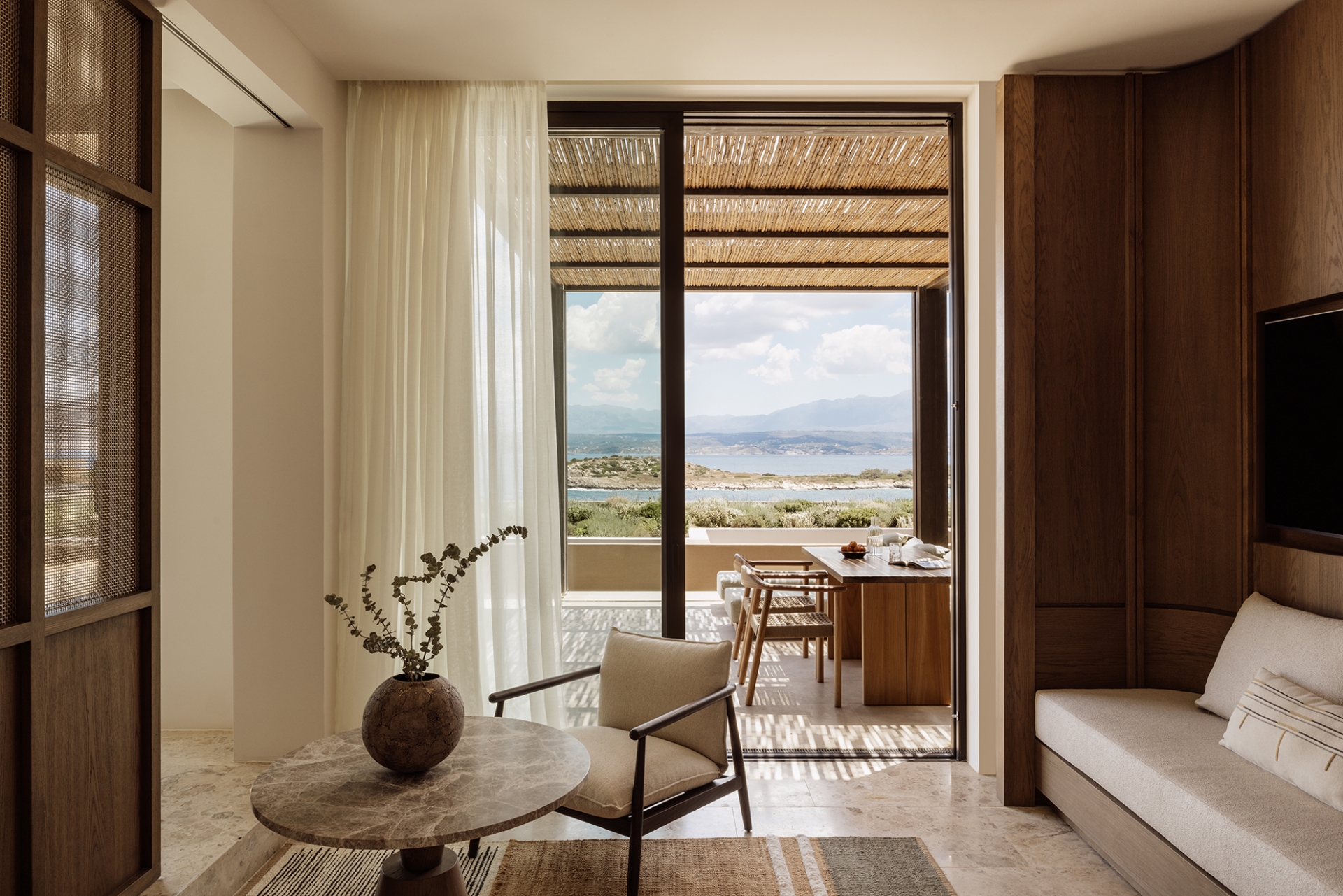
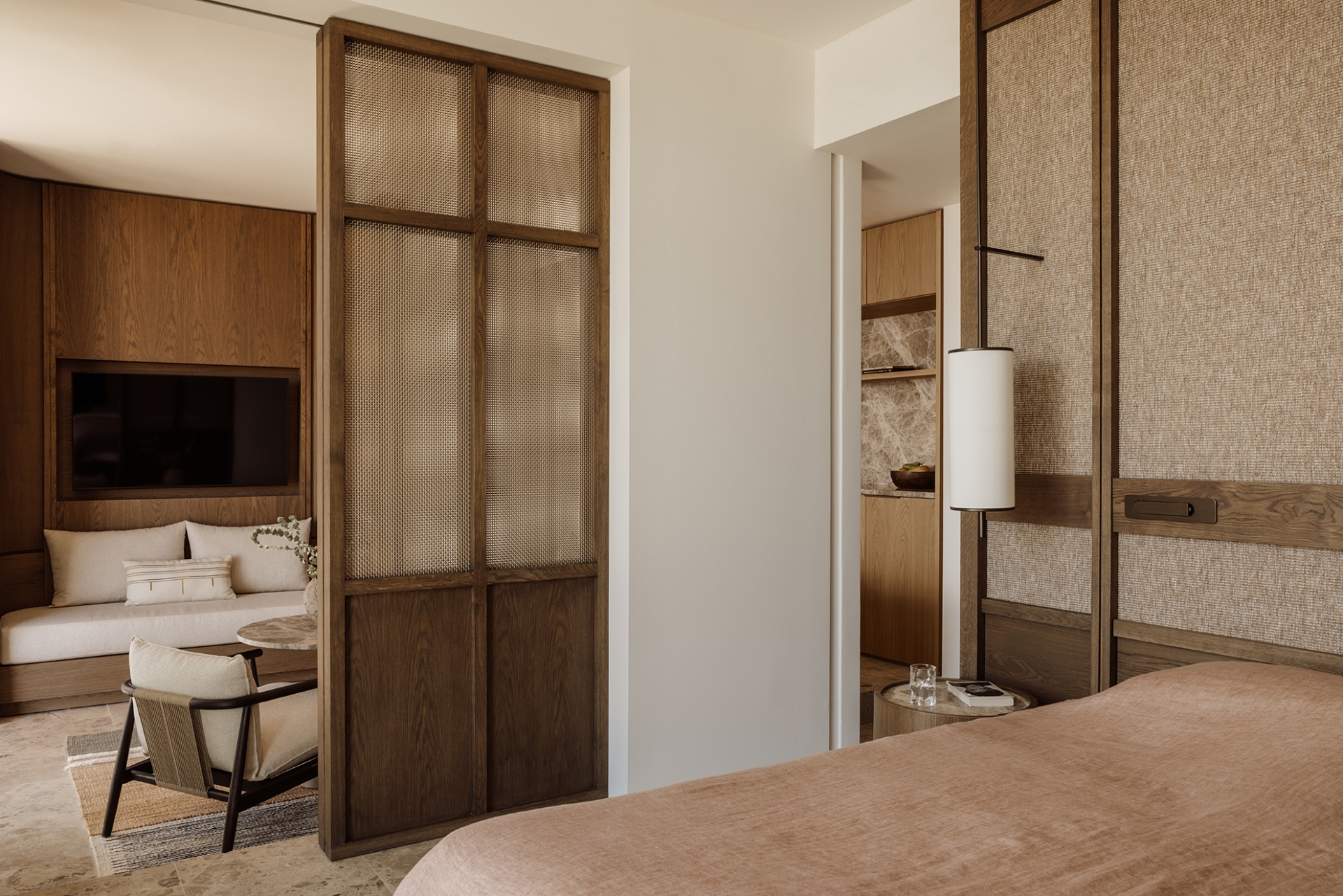
Each room is conceived as an integrated living environment, dissolving the boundaries between interior and exterior spaces. While privacy is paramount, optimal orientation ensures captivating sea views from every vantage point. Private pools appear to float effortlessly within the landscape, creating natural cooling microclimates, while shaded terraces and planted rooftops allow the natural terrain to become an intrinsic part of the guest’s daily rhythm.
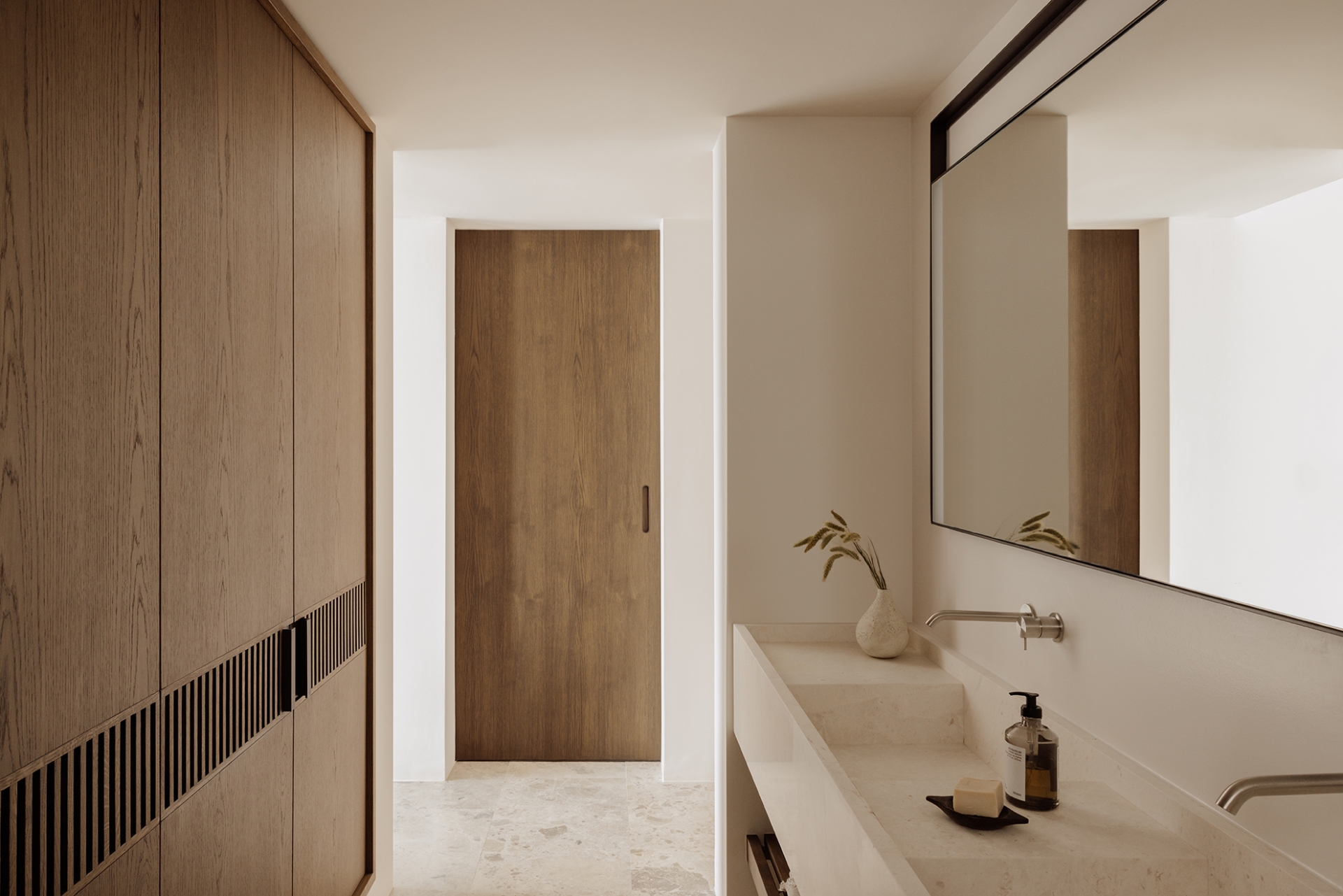
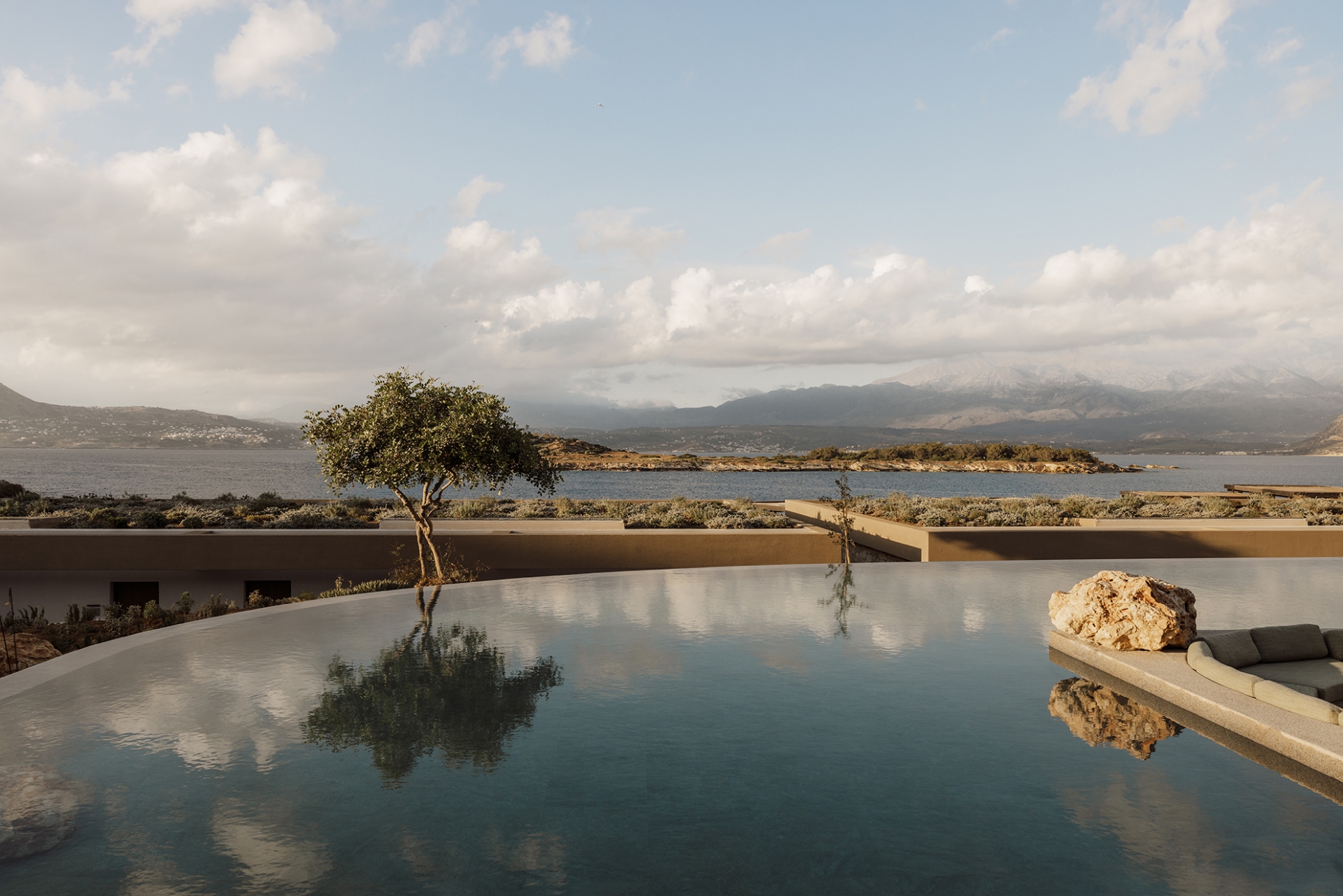
Celebrating Local Craftsmanship, Materials, and Environment
Block722's vision of a harmonious marriage between contemporary architecture and ancient land is realised through deep collaboration with local suppliers, artisans, and manufacturers for almost every material, making, and construction need. Generations of local knowledge and exquisite craftsmanship are directly woven into the project's very DNA.
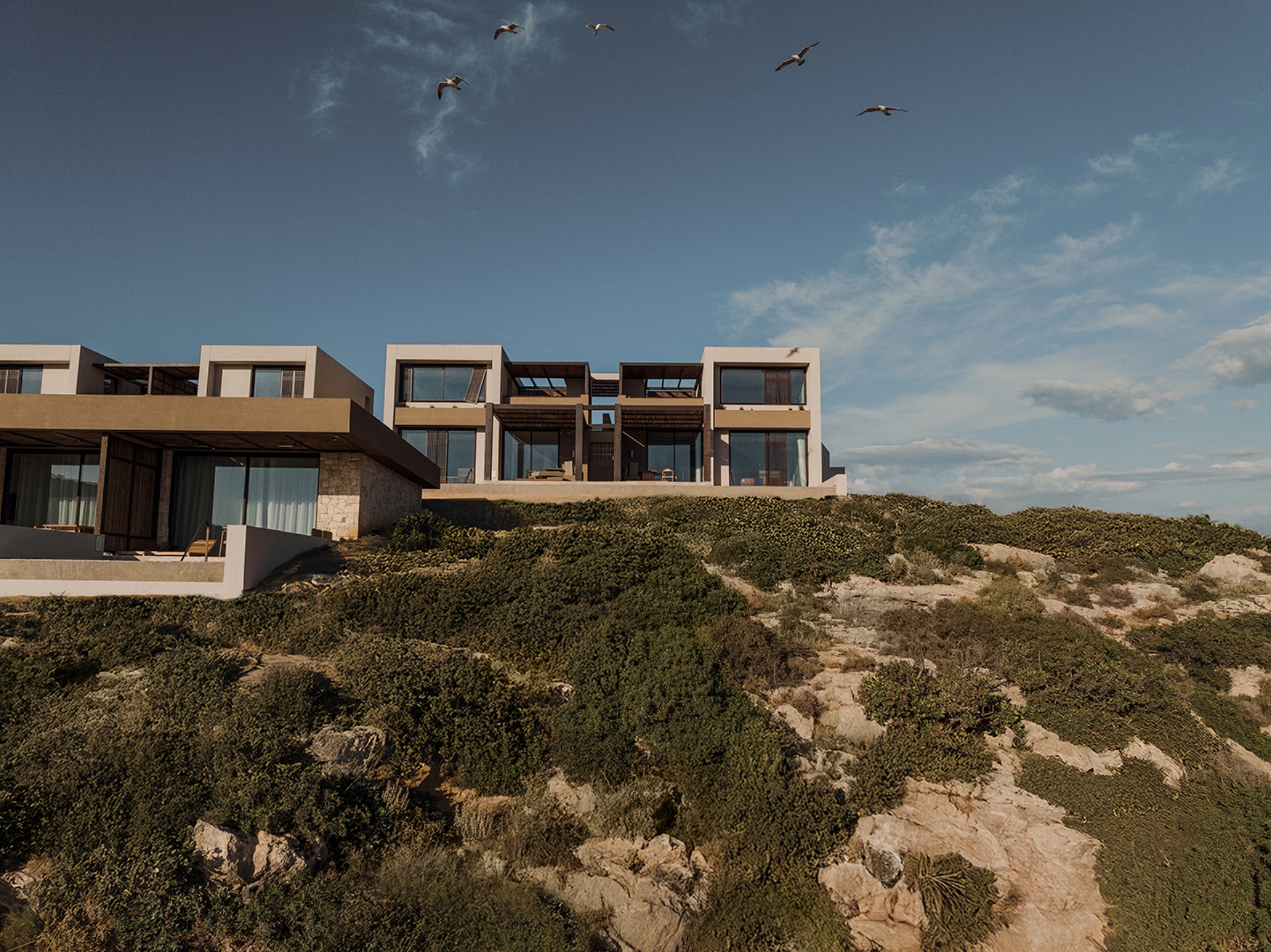
The material palette throughout the resort is a direct reflection of its immediate environment. Stone walls are constructed using material harvested directly from on-site excavations, while concrete elements incorporate aggregates sourced from the very same earth. The Marathi quite literally emerges from its landscape. Meanwhile, the colours, forms, and textures of the fixtures and furnishings – crafted from raw, washed linen, terracotta tiling, earthenware, rattan, and wood – are drawn directly from the surrounding landscape, creating interiors that feel like natural extensions of the outdoors.
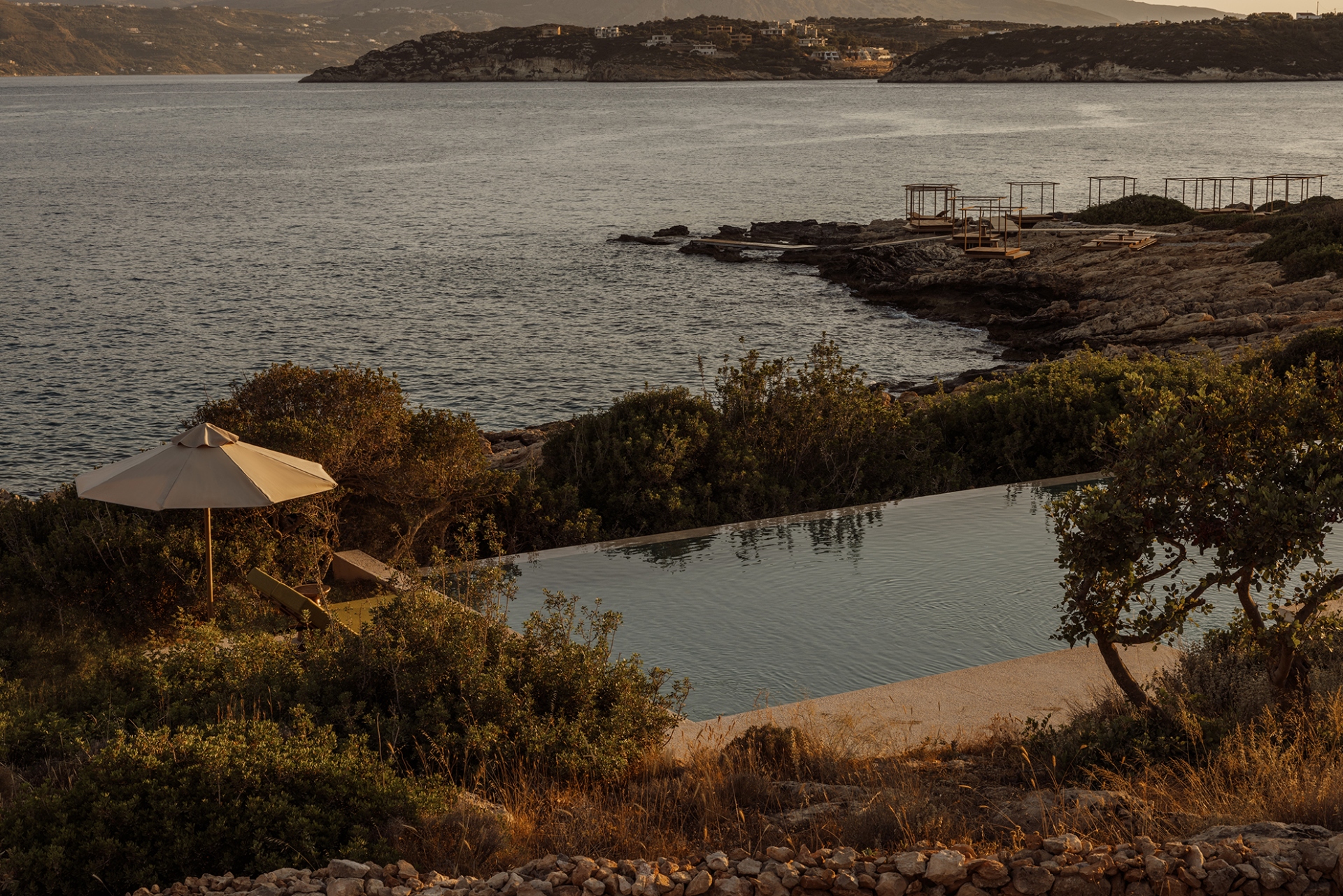
Honouring the Land with Regenerative Design
A profound commitment to sustainability and land stewardship has been the guiding principle behind every design decision at the Marathi. Block722’s site-sensitive strategy was always to organically embed the built volumes into the coastal landscape, preserving the original topography through meticulous post-construction restoration.
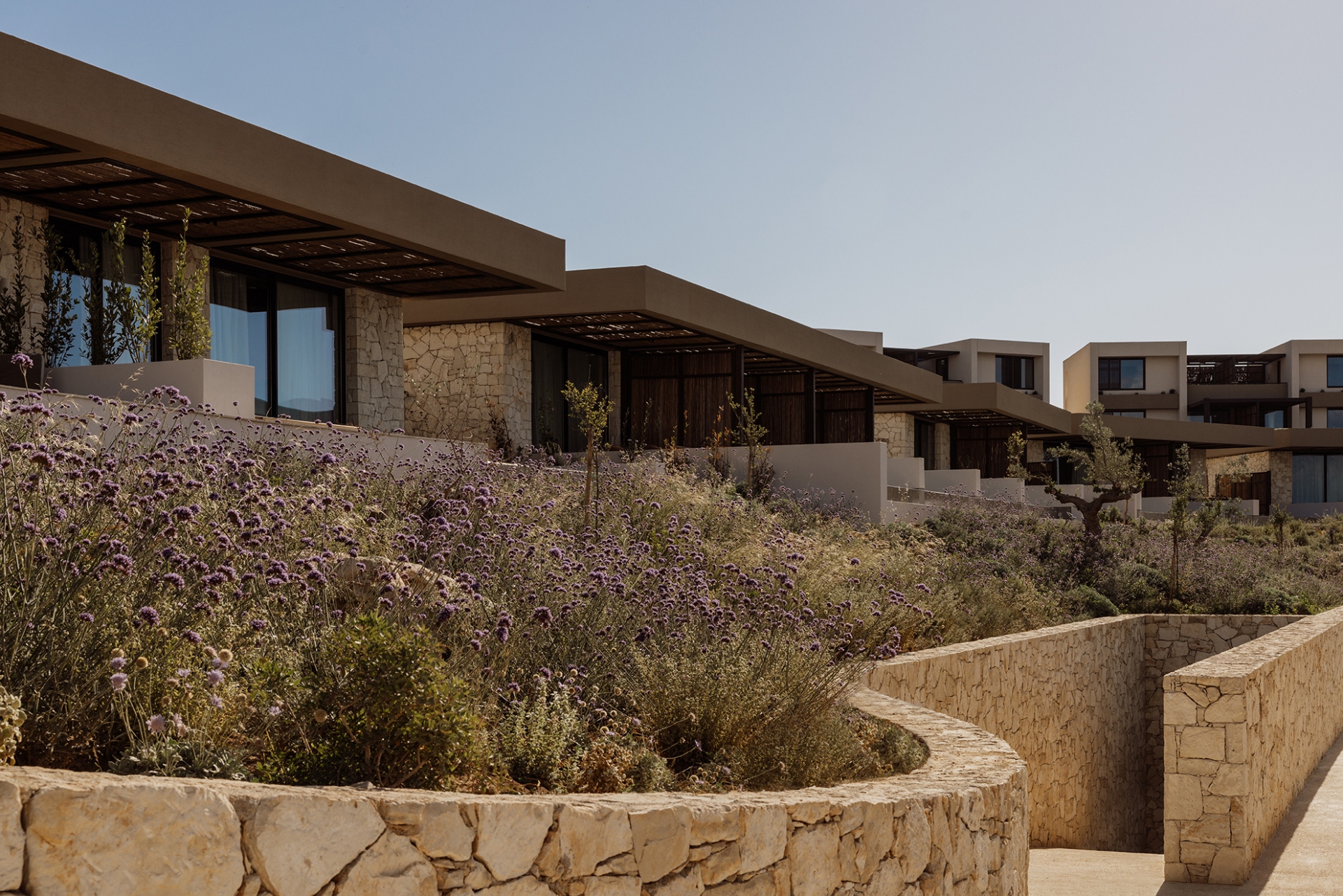
The architecture engages meaningfully with its place through close collaboration with local suppliers, artisans, and builders at every stage of the process, imbuing the project with authenticity and material depth. The material palette is drawn directly from the landscape. Stone walls are built using material quarried on-site, while aggregates from the same soil are used in the concrete. The hotel quite literally emerges from the land that hosts it. The colours, forms, and textures of the furnishings and materials—including raw linen, terracotta, ceramics, woven fibres, and timber—shape interiors that feel like a natural extension of the outdoors.
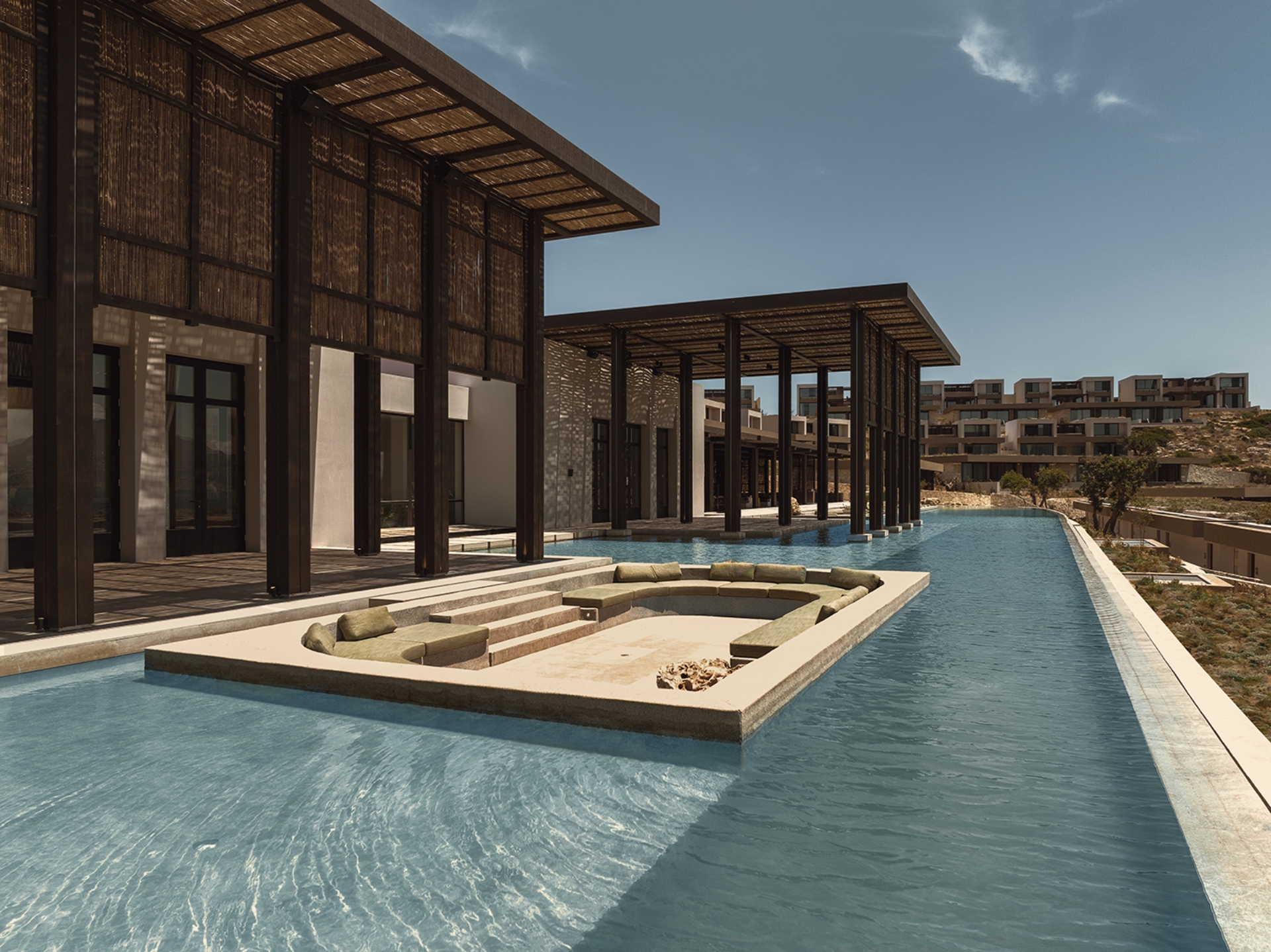
The planting strategy was paramount. Focusing exclusively on native, drought-tolerant species with minimal irrigation requirements, it actively supports local biodiversity, preserving and enhancing the existing flora. At all times, the built elements have been carefully integrated to work with, rather than against, the natural terrain.
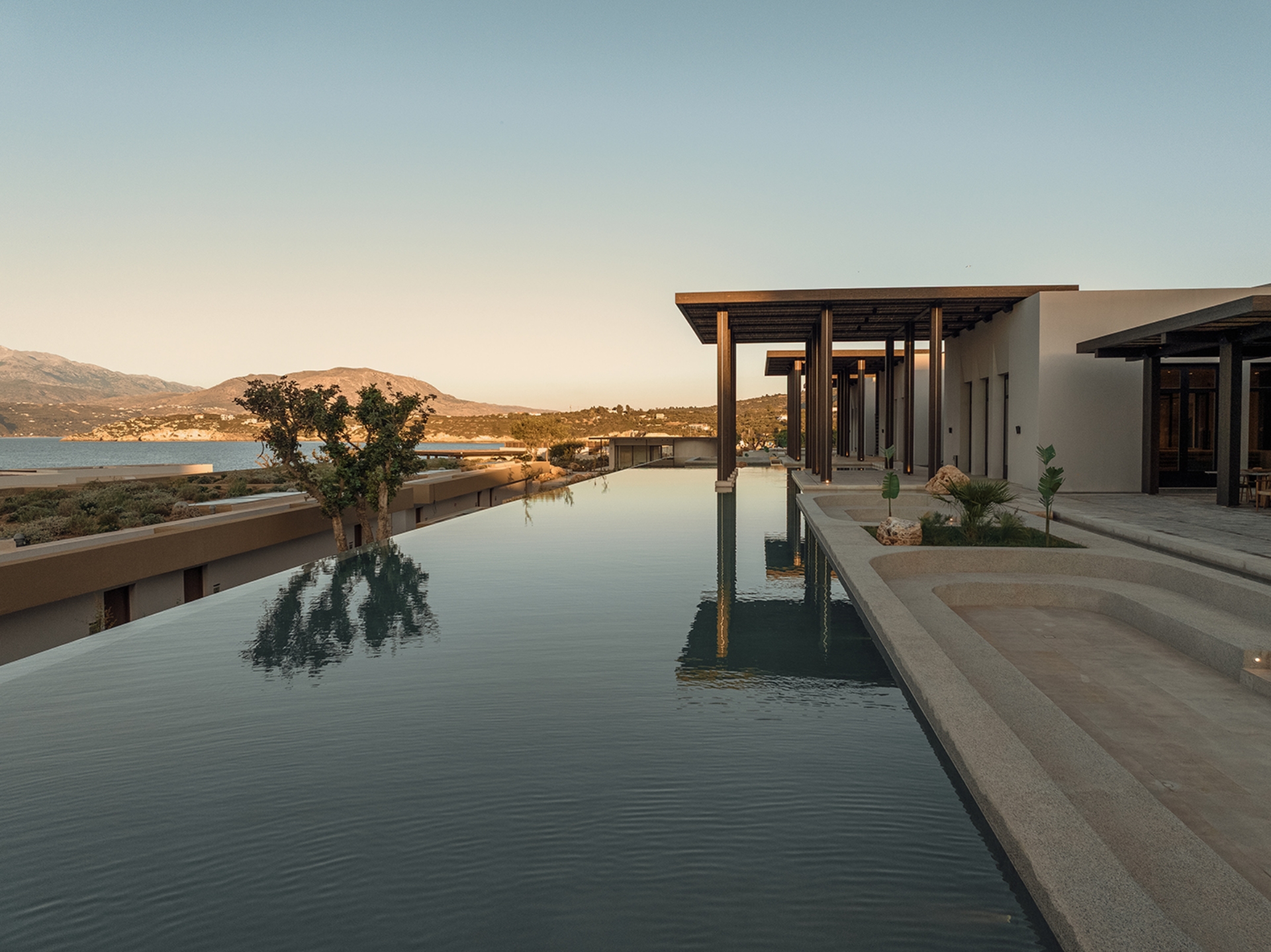
Passive environmental approaches include optimal solar orientation, natural cross-ventilation, and deep pergolas, all of which provide effective shading, enhancing thermal comfort and significantly reducing energy use. Active approaches include renewable energy production through the inclusion of photovoltaic panels, water sourcing through an on-site well, and green roofs that improve thermal insulation while visually blending buildings into the landscape. These integrated systems work in concert to minimise the project’s environmental impact while creating a destination that actively enhances the health of its ecosystem.
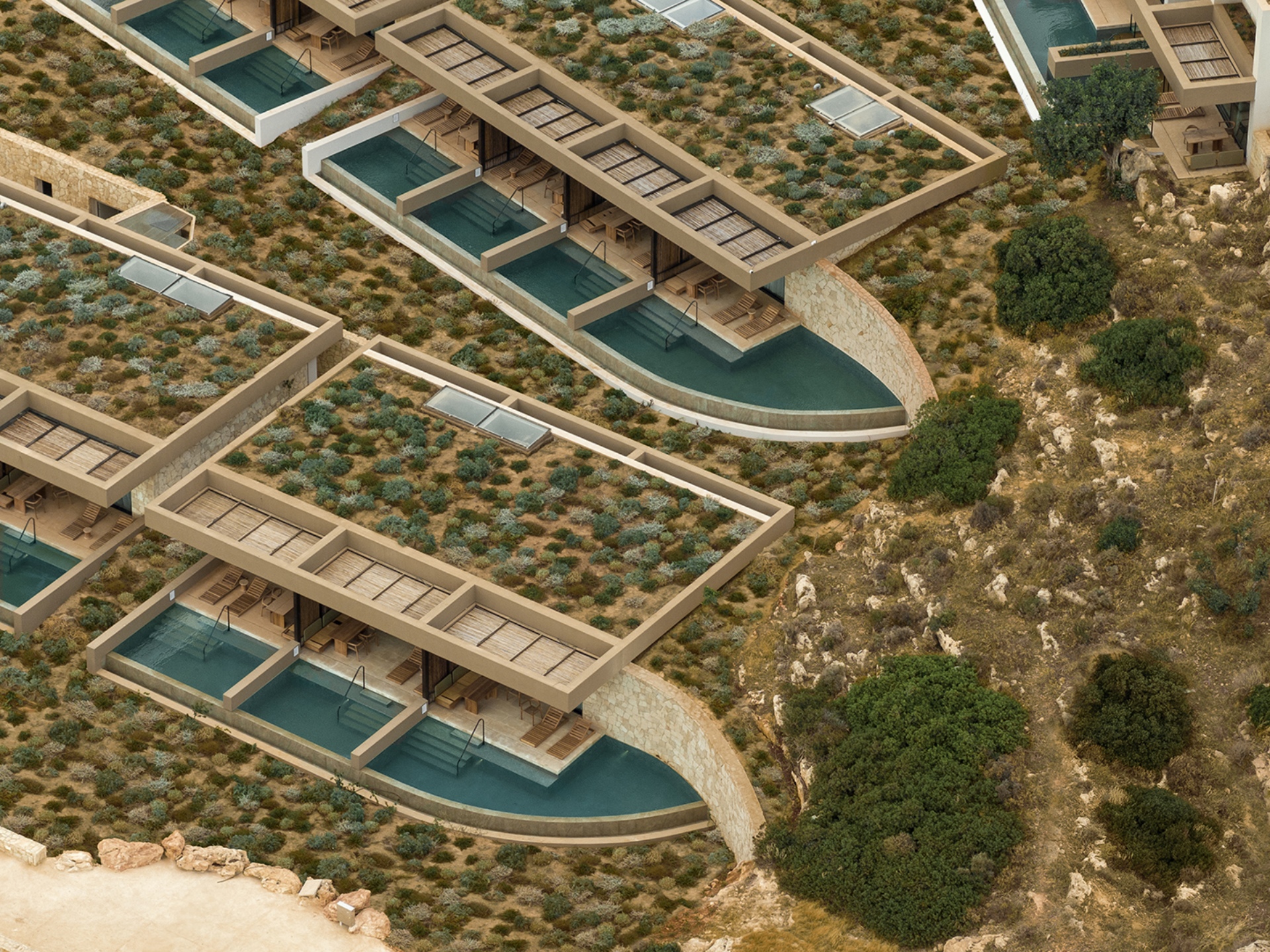
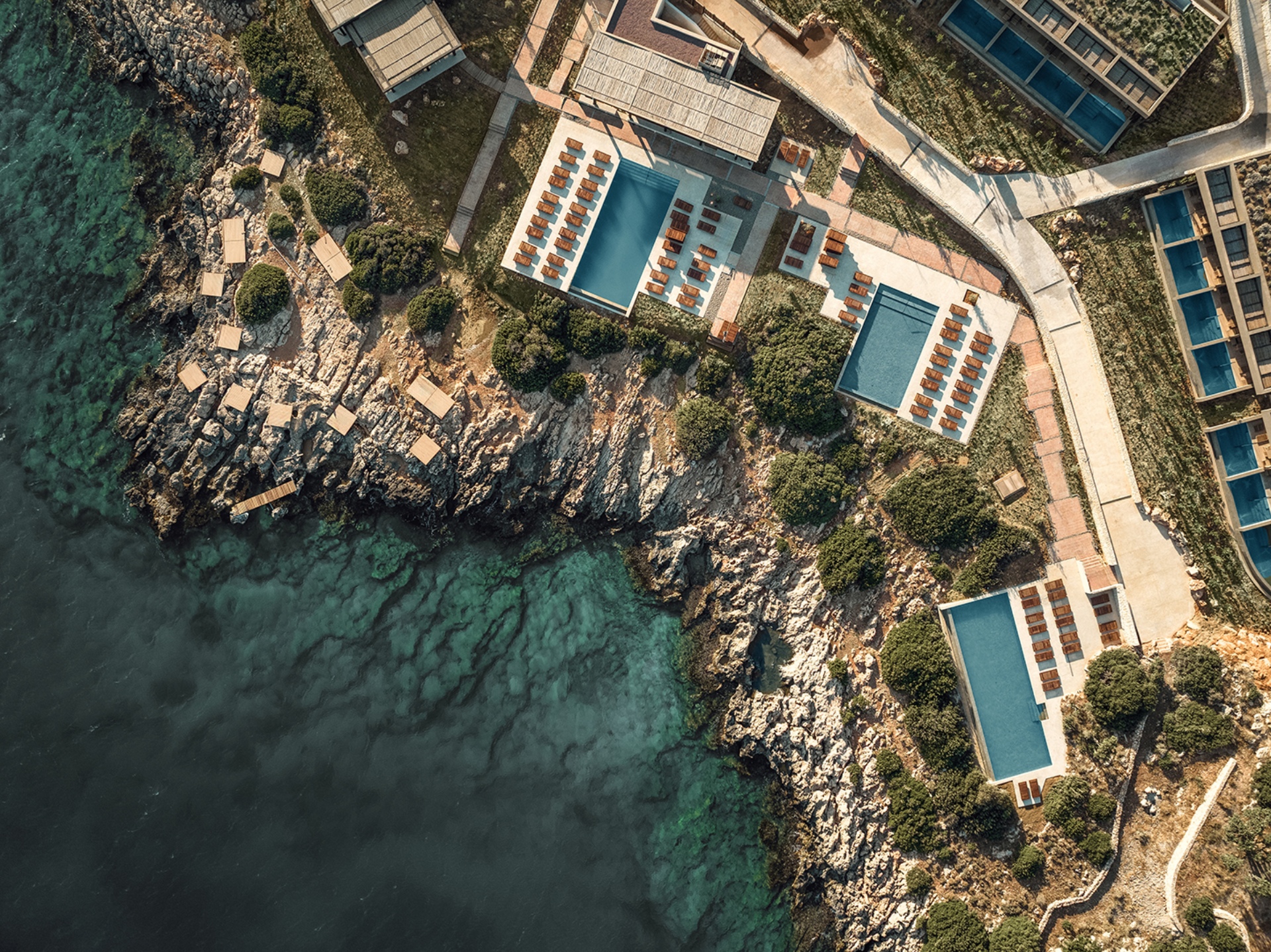
A Blueprint for Responsible, Restorative Hospitality
Here, on this dramatic Cretan coastline, construction and conservation have converged to seamlessly embed contemporary, restorative hospitality within one of the Mediterranean's most treasured landscapes. The JW Marriott Crete Resort & Spa stands as a living example of architecture's profound power to honour placemaking while creating transformative experiences – ones that connect guests not only to the idea of luxury, but to the deeper, authentic rhythms of island life.
